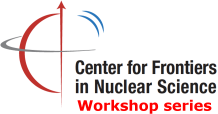The workshop will be held online via Zoom. Use this link for the remote connection: This Zoom
The Electron-Ion Collider (EIC) has recently received CD-1 approval from the US Department of Energy. The EIC Yellow Report, which summarizes our current understanding of the physics program at the future facility, has been published. The international community has formed proto-collaborations and is working toward detector proposal submissions. One topic, which has not received detailed coverage in the Yellow Report, is the production of quarkonia in deep inelastic scattering (DIS). It is both important and timely to have an expert-level discussion on heavy quarkonium production, its role in determining nucleon and nuclear structure, and the physics of hadronization and final-state interactions. The EIC community can utilize the lessons learned from HERA, the Tevatron, RHIC, and the LHC. We hope that the workshop will help the proto-collaborations flesh out this physics in their upcoming detector proposals.
Questions that the workshop will address include, among others, the following:
- Production of quarkonia in DIS: NRQCD and the various factorization schemes, such as collinear and TMD factorization, will be reviewed with an emphasis on the theoretical developments for a precision quarkonium program at the electron-ion collider. We plan to have an in-depth discussion of the constraints that the EIC can provide on the LDMEs and cover specifics related to the lower center-of-mass energies at the EIC, such as near-threshold production, and high center-of-mass energies, such as the small-x regime.
- Initial-state and final state effects for quarkonia: Quarkonia are complementary probes of the structure of nucleons and nuclei and can provide unique insights into their gluon content. In electron-nucleus collisions shadowing effects and final-state interactions can further alter the production rates of the J/y and U families. The theory that relates the quenching of quarkonia to the transport properties of cold nuclear matter needs further development. At this workshop, we intend to work toward strategies that can help us separate the initial-state and final-state effects.
- Instrumentation and detector capabilities for quarkonium physics at the EIC: Rates, backgrounds, and detection channels for quarkonia in deep inelastic scattering will be discussed. We plan to invite experts from the current hadron collider experiments to describe the state-of-the-art technology and detector sub-systems for quarkonium measurements. A central topic of the workshop will be an in-depth examination of the J/y and U physics programs of ATHENA, CORE, and ECCE. We expect that this discussion will also help the proto-collaborations refine and finalize their detector proposals.
For each of the three days of the workshop, we will focus on addressing one of the above topics with talks from experts and students, as well as a topical discussion session at the end of the day.
This event is part of the CFNS workshop/ad-hoc meeting series. See the CFNS conferences page for other events.

